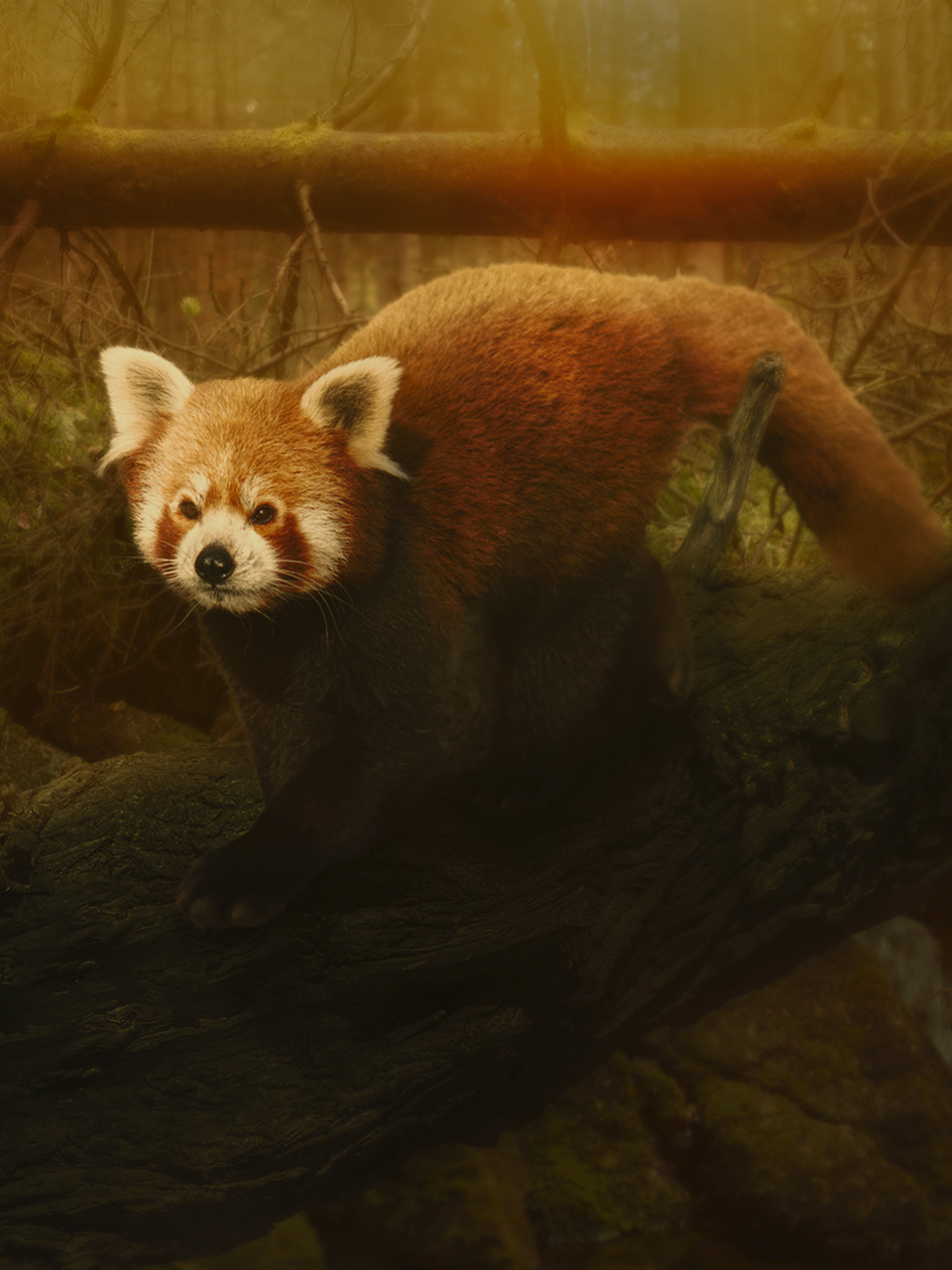
Tap to Read ➤
The Lesser Panda, The Bear That Thinks It's a Cat
Buzzle Staff


You've probably seen pictures of huge black and white giant pandas, but the lesser panda is the giant panda's lesser known cousin. Here's more.

The lesser panda, also known as the red panda, is a medium-sized, bear-like mammal that lives in the steep forested mountain slopes of Bhutan, China, India, Laos, Burma, and Nepal.

This endangered species is about the size of a house cat, weighing about 12 pounds, and some of its characteristics resemble those of cats. Although the usual sounds made by lesser pandas are short, squeaky, whistling noises, if they are frightened or angry they stand on their hind legs and give sharp spitting noises, just like a cat.

The face looks very much like a cat's face, with long whiskers, broad cheeks, and a black nose. The muzzle, eye patches, and inner ears are white. They have thick rusty brown or deep chestnut-colored coats, with a long, luxurious tail ringed in broad brown and ginger-colored bands.

Some people call the lesser panda a 'bear-cat', probably because of its appearance. Although it walks like a bear-on all fours, it's actually more closely related to raccoons than it is to the giant pandas you're probably familiar with. Its claws are very sharp, just like a cat's, but they are only partly retractable.

The front feet have an extended pad on the sole, and the first toe that the panda uses to help out in climbing and grasping bamboo poles, one of their favorite meals. Their teeth and jaws are also well suited to eating bamboo.

They have broad teeth and strong jaw muscles, which result in a relatively large head compared to other mammals the same size. Although bamboo is its meal of choice, it also eats roots, acorns, berries, insects, young birds, and small rodents.

The lesser panda tolerates much colder temperatures than the giant panda does, making its home in steep, snow-covered mountain slopes with thickets of bamboo, giant rhododendron, and oak. It rests and shelters itself high in tree branches or rock crevasses.

As a result of the habitat it prefers, it has become endangered due to deforestation and forest fragmentation-all caused by population growth and humans encroaching on its natural habitat. Other human activities are also affecting the species, including the demand for lumber, inadvertent trapping, hunting, and even wars in the regions where it lives.

The World Conservation Union has listed the lesser panda as endangered because of these threats to its natural environment, and there is concern that recovery of the species may be difficult, since these threats are not likely to diminish or go away anytime soon.

Hopefully, with the growing awareness of the lesser panda and species like it, the world will begin to understand that the fragility of ecosystems can be shattered forever with just the loss of even one species. To ensure the future of this beautiful, engaging creature, humans must take notice and learn to share the Earth, instead of destroying it.